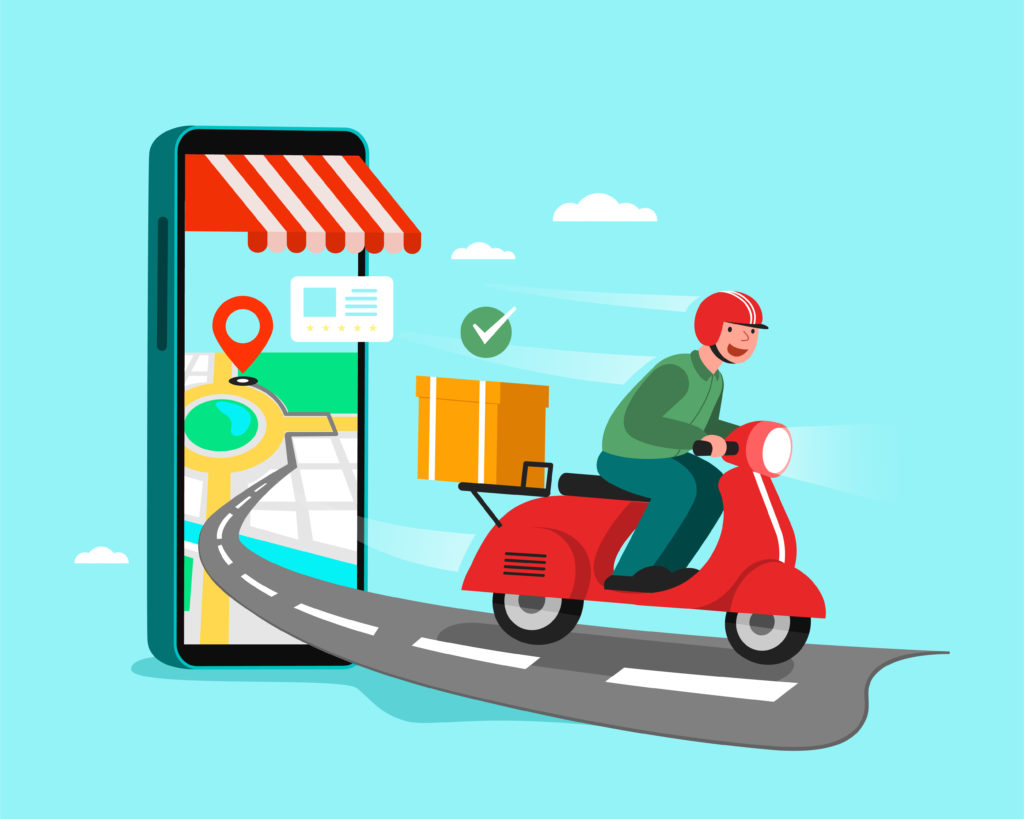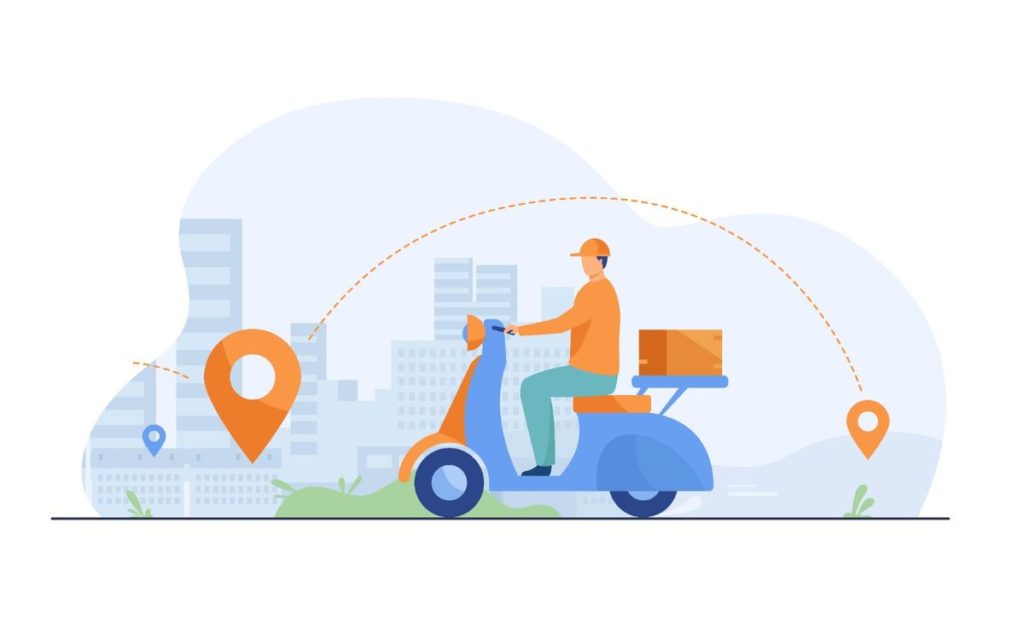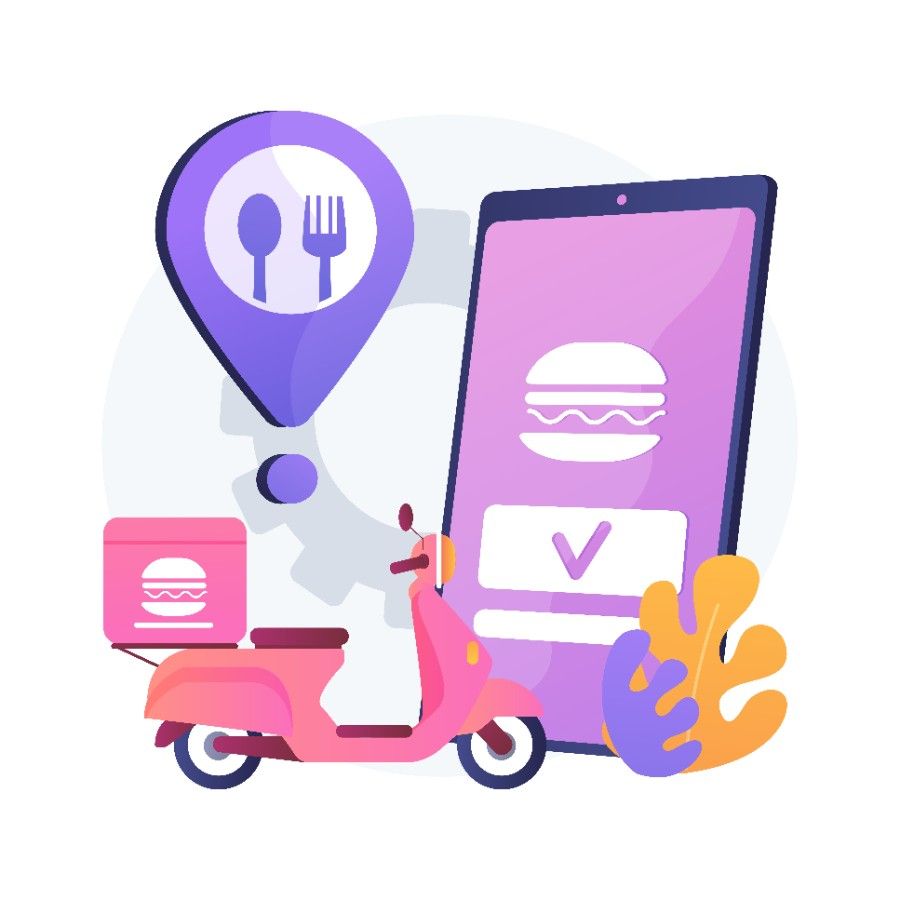
- Products
- Solutions
- Learn
- Partner
- Try Now
COVID19 has impacted the online food delivery business in a huge way. As the pandemic hit most of the world, the brick and mortar food business’s pre-existing problems were exposed. With the new normal of social distancing, queues are longer than ever, as Bloomberg reported in a tweet.
The same situation that made the restaurant business vulnerable, helped online food delivery services grow exponentially. With lockdowns imposed by several countries worldwide, and more people working from home, online food delivery services helped many companies stay afloat.

Whether it’s RTC(Restaurant to Consumer) delivery, or PTC(Platform to Customer), these businesses are estimated to reach $182,327 by 2024. The market will register a compound annual growth rate of 7.5% during 2020-2024. Due to this meteoric rise of the food delivery market, many players are now pushing hard to survive. So, the question that comes to your mind is:
How to improve your food delivery service for survival amidst stiff competition?
Well, here we are with some answers!
To begin with, let’s first understand the online food delivery business model and its challenges.
The Business Model
As we saw earlier, there are two prominent business models in play for online food delivery services- RTC and PTC. Apart from these two, there is an on-demand food delivery model, but that is a part of the platform to customer models, like UberEats or GrubHub.
Restaurant to Customer(RTC)

Online food delivery businesses that cater to customers through in-house delivery services and crowd-sourcing delivery platforms like UberEats, are referred to as Restaurant to Customer. They make food and deliver it to customers through their physical restaurants, and also have an in-house delivery service. Take an example of McDonald’s or Domino’s Pizza to understand the RTC business model.
Platform to Customer(PTC)
Platform to customer business model is one of the most popular approaches in the market. They crowdsource different delivery personnel and restaurants to offer food delivery services. A PTC model explores food delivery apps and software to help restaurants manage orders, or delivery aggregators with the management of service.
UberEats, Swiggy, Zomato, GrubHub, and others are examples of such PTC. They offer a digital platform for different restaurants to provide food, and different delivery personnel to deliver it. Here, the revenue is mostly commission-based for the platform.
Customer to Customer(CTC)
Customer to Customer explores the PTC model differently, where the platform is just a marketplace offering a medium for food producers to sell their products to users. Here, both the food producers and delivery service providers are consumers. The revenue model explores a commission-based revenue-sharing among the delivery service providers, the platform, and the restaurants that offer the food.
Now, let’s look at some of the challenges that online food delivery face.
Challenges of online food delivery business
1. Partner’s Revenue
The first and foremost challenge that many online food delivery businesses face is deciding on revenue sharing. It has been the focus of many food delivery companies losing partners. According to a report, food delivery apps like Postmates, UberEats, or Doordash charge as much as 17% of revenue, which has forced many restaurants to rethink partnering with them.
2. Customer Fidelity
Another significant issue is customer fidelity. As the consumers receive new options and better deals, they are bound to leave you. So, keeping your platform or online food delivery service relevant becomes paramount. Here, you can build a food delivery app to engage customers, and keep them associated with your brand.
3. Logistics Problems
Maintaining delivery efficiency and driving reliability is not easy for any online food delivery service, especially in areas where the delivery personnel are hard to find. It is also essential for food delivery businesses to offer fresh food to consumers, and that is why it becomes paramount to have proper packaging of food products. And now with the pandemic, the need for special logistics measures becomes even more necessary.

Apart from such difficulties, routing the delivery personnel to optimise delivery times is also quintessential to such businesses. With a tech partner, you can create food delivery management software with a route optimization feature.
4. Food Standardization
If you are a PTC or a CTC business that offers food sourced from different restaurants and delivered on-demand to users, standardisation is a huge challenge. As most of these restaurants have different tastes to cater to, their heterogeneity makes it difficult to offer consistency to customers.
Now, let’s explore some tips and tricks to help you be the best online food delivery business.
Tips and tricks to build the best food delivery app
Gamification Approach
The gamification approach is a great way to engage your customers. Here, you can create a food delivery app or software that can imbibe gamification techniques. For example, you can introduce a rewards system on every order placed on your food delivery system.

With these reward points, customers can purchase discount coupons, or you can offer other products on your platforms, like clothing or fashion accessories. It will help you boost customer loyalty quickly.
Order Tracking Feature
It is a common feature of online food delivery systems. But you can enhance it with real-time communication features, like estimated time of arrival, special instructions to customize orders, an option of environment-friendly packaging, and more. You can easily embed such features in your food delivery software or mobile application through a reliable tech partner.

Revenue Calculator
A technical partner can help you make a food delivery app that not only allows customers to estimate the total order amount, but provides a revenue-sharing estimate for your partners. You can also develop a food delivery system software with a dedicated revenue sharing calculator. It will help you calculate the exact revenue shares, and build confidence among delivery partners.
Payment Features
With the onset of online payments, there have been many innovations amidst fin-tech. Apart from the usual digital payment options that competitors have to offer, go with unique features like Bitcoin payments. As you will offer more payment convenience, customer loyalty is bound to increase, making you a viable option each time they order food.
Innovative Features
Customers are always curious about new technologies, and you can leverage it with a food delivery system software, and innovations like Artificial Intelligence, you can create innovative features. Try to add innovations like Augmented Reality/ Virtual Reality(AR/VR), Machine Learning, Speech Recognition, etc.

With such innovations, you can explore solutions like chatbots to help customer issues and gather data to improve the food delivery system. You can also build a food delivery app that recommends the best dishes to order from different restaurants based on customer’s order patterns.
With AR/VR, you can allow customers to visualise a dish being prepared live on the app itself, or include a live feed from kitchens to make it more engaging.
Now, that we have discussed some great tips and tricks to build the best food delivery system, let’s know some of the benefits you get from building a food delivery app.
Advantages of food delivery app
- Enhances the user experience through good user interface designs.
- Helps build customer loyalty through better engagement.
- With an app, customer’s access to your service is smooth and easy.
- The payment becomes convenient for customers.
- Easy to gain data on customer’s feedback.
- Better order management and delivery allocations.
- Proper revenue sharing and tracking of earnings through food delivery software.
- Access to order history, and instant revolution to customer’s issue.
- Ease of order cancellations for customers through app features.
Conclusion
With pandemic, food delivery apps have become the new normal for many consumers who did not want to step out of their comfort zone. If you are to take advantage of such a market which already has many giant players like Uber, GrubHub, and even Amazon, there need to be smarter solutions.
Start ideating and find a partner that knows the right food delivery app solution for your business to be the best in the market!
Subscribe to stay ahead with the latest updates and entrepreneurial insights!

Subscribe to our newsletter
Get access to the latest industry & product insights.





















